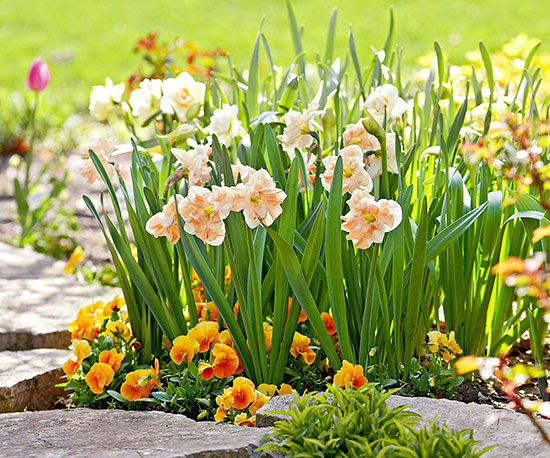






Even when they're not blooming, bulbs need a little TLC so that they'll flavor better next time around.
Remove spent flowers of large-flowered bulbs, such as tulips and daffodils, as soon as they fade. The plants' energy is then channeled into forming large bulbs and offsets rather than into setting seeds. Allow smaller bulbs (muscari and puschkinia, for example) to set seed, so they self-sow and form ever-larger drifts.
Whatever else you do or don't do, resist the temptation to remove bulb foliage while it is green; the green leaves nourish the bulb and next year's flower buds, which form during summer. Cut or pull off leaves only after they yellow. Also, don't braid leaves to get them out of the way. Braiding reduces the amount of sunlight the leaves get and hinders growth. It is safe to mow the green leaves of crocuses and snowdrops naturalized in a lawn if you wait at least six weeks after blooming.
Major bulbs need fertilizer, but at the proper times. Work a high-phosphorus plant food, such as rock phosphate or superphosphate, into the bottom of the holes when you plant. Do not apply bonemeal where digging animals are a problem; its scent attracts animals. Thereafter the bulbs need nitrogen. Fertilize with a balanced fertilizer in early spring when the shoots emerge and again after flowering to fuel foliage and bulb growth for next year's flowers. Or, apply bulb booster (a slow-release formula) to plantings in fall.
Bulb leaves may suddenly poke above ground during warm winter spells, causing gardeners to worry unnecessarily that later snow or freezing temperatures will kill the bulbs or destroy the flowers. Foliage and flower bulbs usually can withstand freezing temperatures without harm. The flowers suffer injury only if the brittle stems are broken or if the temperature changes are too abrupt.
Learn more about growing a spring-bulb favorite, paperwhites.
Copyright © www.100flowers.win Botanic Garden All Rights Reserved